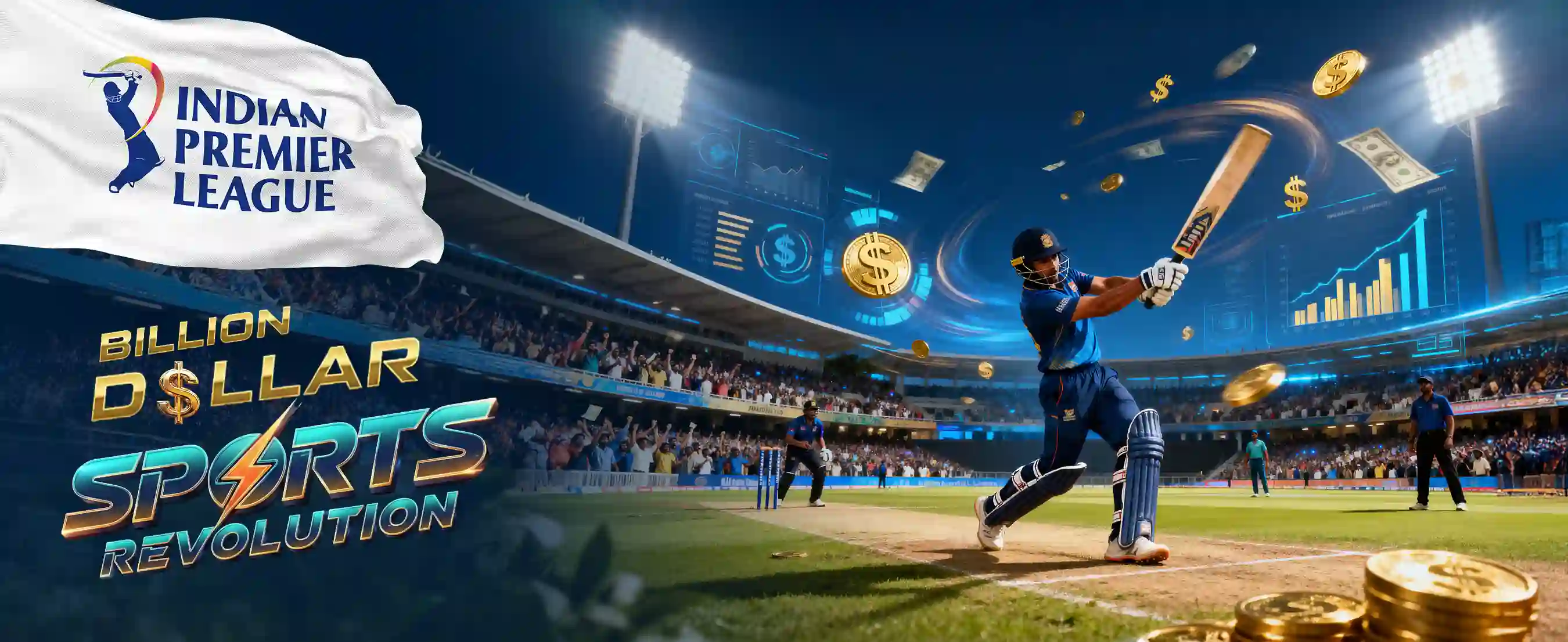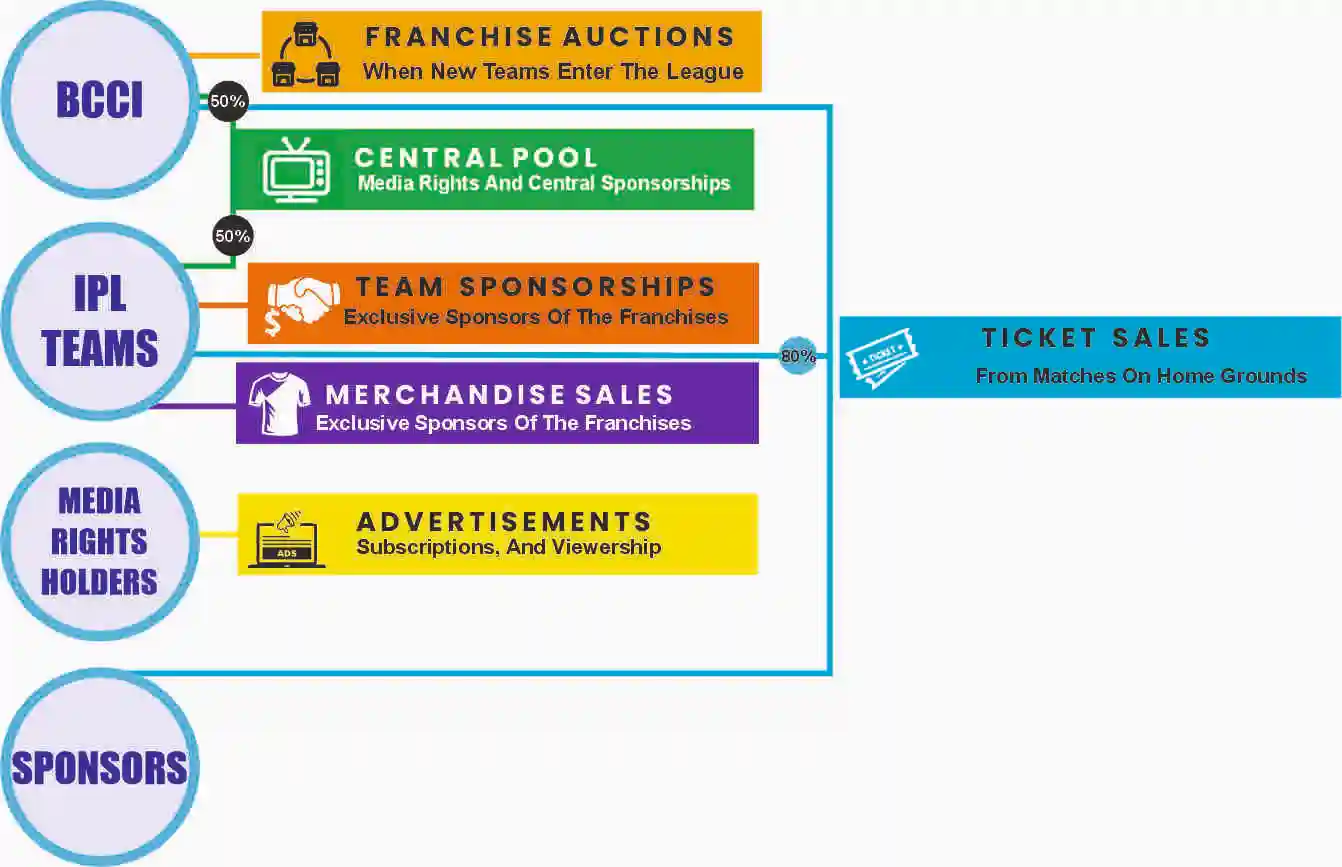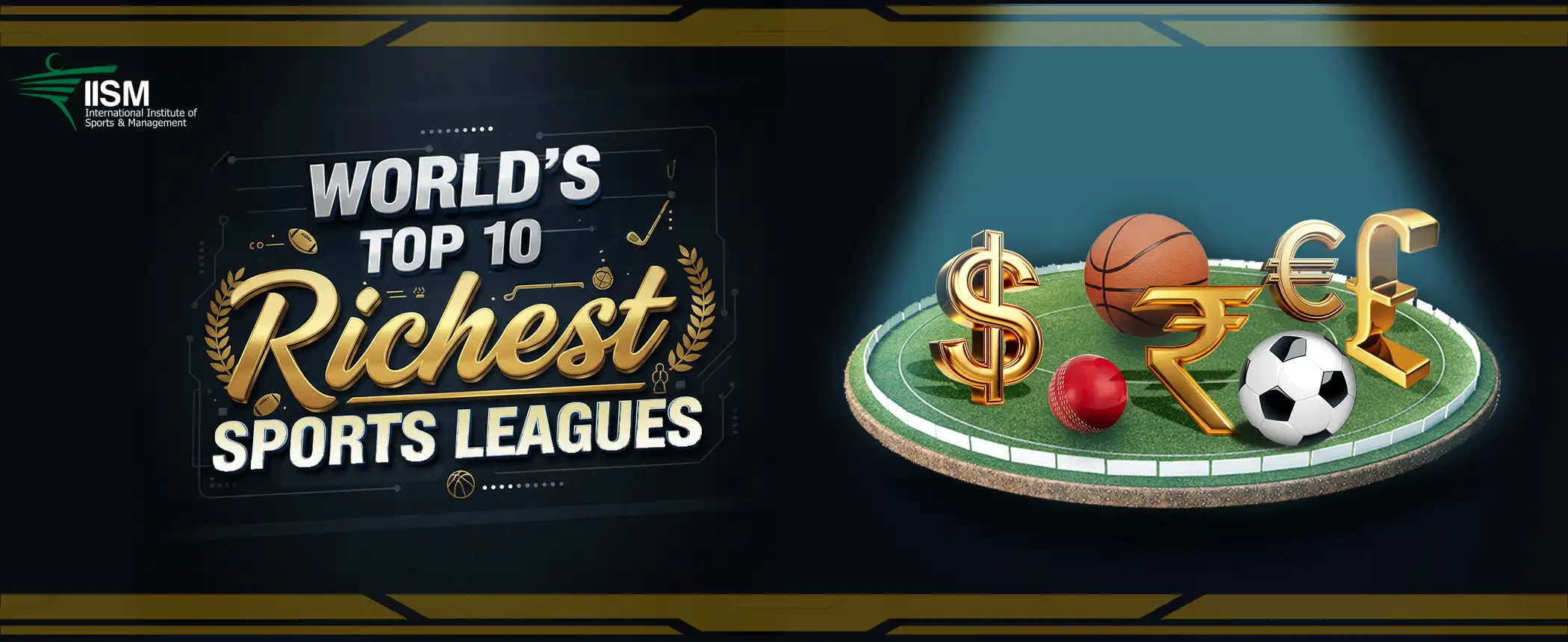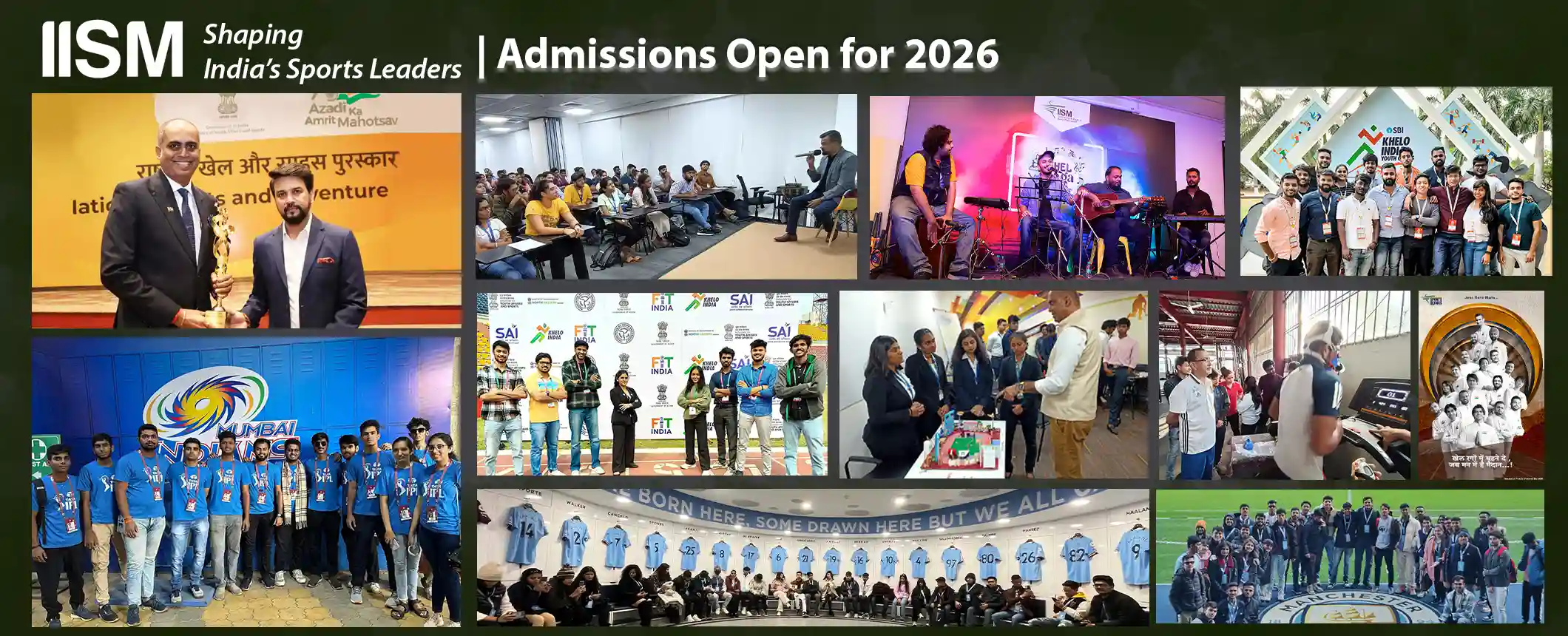How IPL Led India’s Billion-Dollar Sports Revolution

India’s sports business has bloomed into a treasure trove of opportunities. Why opportunities, one might ask? It’s because the sports business in India, as of 2026, benefits not only the investors but everyone involved in the process.
Sports Leagues like the Indian Premier League (IPL) and the Pro Kabaddi League (PKL) have completely changed this commercial landscape of the sports industry, with all stakeholders such as players, organizers, sponsor brands benefitting massively.
How IPL Changed the Game
The Indian Premier League (IPL) is the biggest cricket league in the world and has gained global recognition from various cricketing nations as well as associations. The secret to its success lies in its business model, which laid the foundation for IPL being such a global sensation.
The Origins of IPL
The IPL began in 2008, but its story started a year earlier. After India’s 2007 T20 World Cup win under Mahendra Singh Dhoni. Subhash Chandra, chairman of the Essel Group, launched the Indian Cricket League (ICL) to tap into the rising popularity of T20 cricket and create a private, franchise-style competition. However, the league failed to gain BCCI recognition and soon declined.
Around the same time, Mr. Lalit Modi, who had first proposed a city-based cricket league to the BCCI in 1995 and again in 1996, revived his idea. Learning from the ICL’s challenges, he developed a structure that promoted Indian talent while blending cricket, business, and entertainment, ultimately laying the foundation for the IPL’s success.
The IPL was an instant hit, and that was no accident. Its foundation was built on something Indians were deeply connected to: their cricketing heroes. The league highlighted legends like Sachin Tendulkar, MS Dhoni, Rahul Dravid, and Sourav Ganguly as marquee players, giving every fan a familiar face to cheer for right from the start. For the first time, these legends weren’t just teammates in blue; they were rivals, representing different franchises.
That shift gave fans a reason to build loyalty not just to players, but to teams, much like the English Premier League, the NFL, or the NBA. Fans could now support not just players, but teams, creating a brand-new culture of cricket fandom in India.
Then came the icing on the cake — the team owners.
Blend of Cricket & Entertainment
The franchises were backed by a mix of Bollywood stars and powerful business houses, a blend that gave the IPL instant status and mass appeal. Shah Rukh Khan, Juhi Chawla, Preity Zinta, and Shilpa Shetty brought glamour, while figures like Mukesh Ambani and Vijay Mallya added business credibility and global visibility. The result was a league that felt larger than life, a perfect fusion of entertainment and enterprise.
The IPL’s impact on entertainment was so massive that it even reshaped the film industry’s calendar. Producers avoided releasing major films during the season, knowing audiences were completely hooked on this T20 cricket bonanza. For those few weeks, cricket was not just a sport; it was primetime entertainment.
And beneath all the spectacle, the IPL built something lasting. It became a launchpad for young Indian talent — a place where uncapped players could share the field with international greats, learn from them, and prove they belonged on the biggest stage while also earning a fortune. Over time, it evolved into a perfect blend of competition, commerce, and culture — one that redefined how India watches, celebrates, and lives cricket.
IPL’s Business Model & Finances
The basic structure of the business model was that there would be franchises that would not be owned by BCCI but rather by individual owners, such as companies, film stars, and business groups. These franchises pay the BCCI to buy the rights to operate a team for a long-term period (usually 10 years or more). The BCCI, as the governing body, controls the overall structure, rules, and commercial rights of the league.
Main Revenue Sources of the IPL
-
Media and Broadcasting rights of the league
-
Brand Sponsorship deals
-
Stadium Ticket Sales
-
Merchandise Sales
The media and broadcasting rights for the league are the financial backbone of the league, generating most of its revenue. The first media and broadcasting deal signed was with Sony for ₹5,400 crore over a 10-year period. In 2017, Star India won the bidding rights for the IPL at ₹16,347 crore for a five-year deal.
Cut to June 2022, BCCI held an e-auction for the next five-year cycle, and this was the first time that the TV and digital rights were sold separately. Disney Star retained the TV broadcast rights, while Viacom18 acquired exclusive digital streaming rights — a historic shift since Disney+ Hotstar had previously dominated IPL streaming.
However, a major development in 2024 was the merger of the two huge media conglomerates, leading to the formation of Jio Star, which resulted in a ₹48,390 crore deal. This deal made the IPL the second most valuable sports league in the world by per-match broadcast value, behind only the NFL.
The sponsorship for the league is divided into two parts: one is the central sponsor, which is shared among all teams, like Tata for 2025, which is handled by BCCI; the second is the team sponsorship that franchises handle themselves. These are the brands that appear on the jerseys of the teams.

IPL’s Revenue Structure | Source: The Hindu
The revenue sharing was decided upon the following formula 54% to all franchises (shared equally among teams), 40% to the BCCI / IPL Governing Council, and 6% allocated as prize money. However, this was changed in 2018, and the new formula was as follows: 50% — BCCI / IPL Governing Council, 45% — Franchises, 5% — Prize money.
IPL’s Sky-High Revenues & Profits
The IPL has grown from a modest beginning in 2008 to one of the world’s most profitable sporting leagues. In its inaugural season, the IPL earned a total income of ₹661 crore but recorded a small surplus of ₹14.86 crore after heavy operational expenses and revenue sharing with franchises. By 2013, profits had surged to ₹385.36 crore, a 2,494% jump driven by lucrative broadcasting deals and rising sponsorship values.
The 2018 season marked a turning point, as all eight franchises became profitable for the first time, each earning over ₹200 crore in revenue, backed by Star India’s massive ₹16,347.5 crore media rights deal. The real explosion came in 2023, though, when the league reported a record surplus of ₹5,120.13 crore and total revenues of ₹11,769 crore, fuelled by a ₹48,390 crore media rights deal with Disney Star and Viacom18.
From ₹14.86 crore in 2008 to over ₹5,000 crore in 2023, the IPL’s financial journey mirrors its rise from a cricket experiment to a billion-dollar global entertainment and sports powerhouse now standing shoulder to shoulder with leagues like the NBA and Premier League.

IPL’s Rising Profits Over the Years | Source: KPMG’s Sportlight Report (2025)
Increasing Job Scope in Leagues like IPL
With these increasing top & bottom lines, the IPL and similar such sports leagues in India have a pressing need for top-notch sports management professionals across the spectrum. Be it broadcasting, public relations (PR), venue operations, fan engagement, merchandise retail, social media and multiple other departments — leagues like the IPL have ample amount of internship and full-time job openings.
Even if one doesn’t get to work directly with the league, working with the team franchises, the league’s broadcasters, sponsors and partners is a massive opportunity for youngsters wanting to work in the sports industry.
At IISM, we are paving the way to provide these kinds of opportunities in leagues like the IPL, PKL, and the Indian Super League (ISL). Every year 40-50 of our students work in the IPL as volunteers and interns besides the several others who get internship opportunities with broadcasting companies, sponsor brands, and relevant stakeholders of the IPL.
Even PKL and ISL sees plenty of students working with their teams, venues and sponsor brands to elevate those events as a spectacle. All in all, over 250 IISM students volunteer and work in such top sporting leagues and events in India every year.
Check out our website to know more about IISM’s Live Exposure
The bottom line isn’t about jobs, though. It’s about the experience that youngsters are getting via this billion-dollar booming industry. And IPL has been the core stimulus of this rapid growth over the past decade.
Conclusion
The IPL didn’t just change Indian cricket; it changed the way India looked at sports altogether. What started as a bold idea back in 2008 has grown into one of the biggest success stories in the world of sports and business. It proved that sports in India could be more than just a passion; they could be an industry that creates opportunities, careers, and dreams. The IPL became a platform that united fans, inspired young athletes, and showcased India’s ability to blend entertainment, talent, and innovation on a global stage.
Its success didn’t just change cricket; it redefined how India looks at sports. Its franchise format, local team loyalties, and mix of sport and entertainment became the foundation for nearly every major sports league that followed.
The Indian Super League in football, the Pro Kabaddi League, the Premier Badminton League, the Hockey India League, and even the Pro Volleyball League all took inspiration from the IPL. They adopted the idea of city-based teams, player auctions, and the belief that sport could be exciting, emotional, and unifying all at once.
Also Read: World’s Top 10 Richest Sports Leagues: The Billion Dollar Powerhouses













